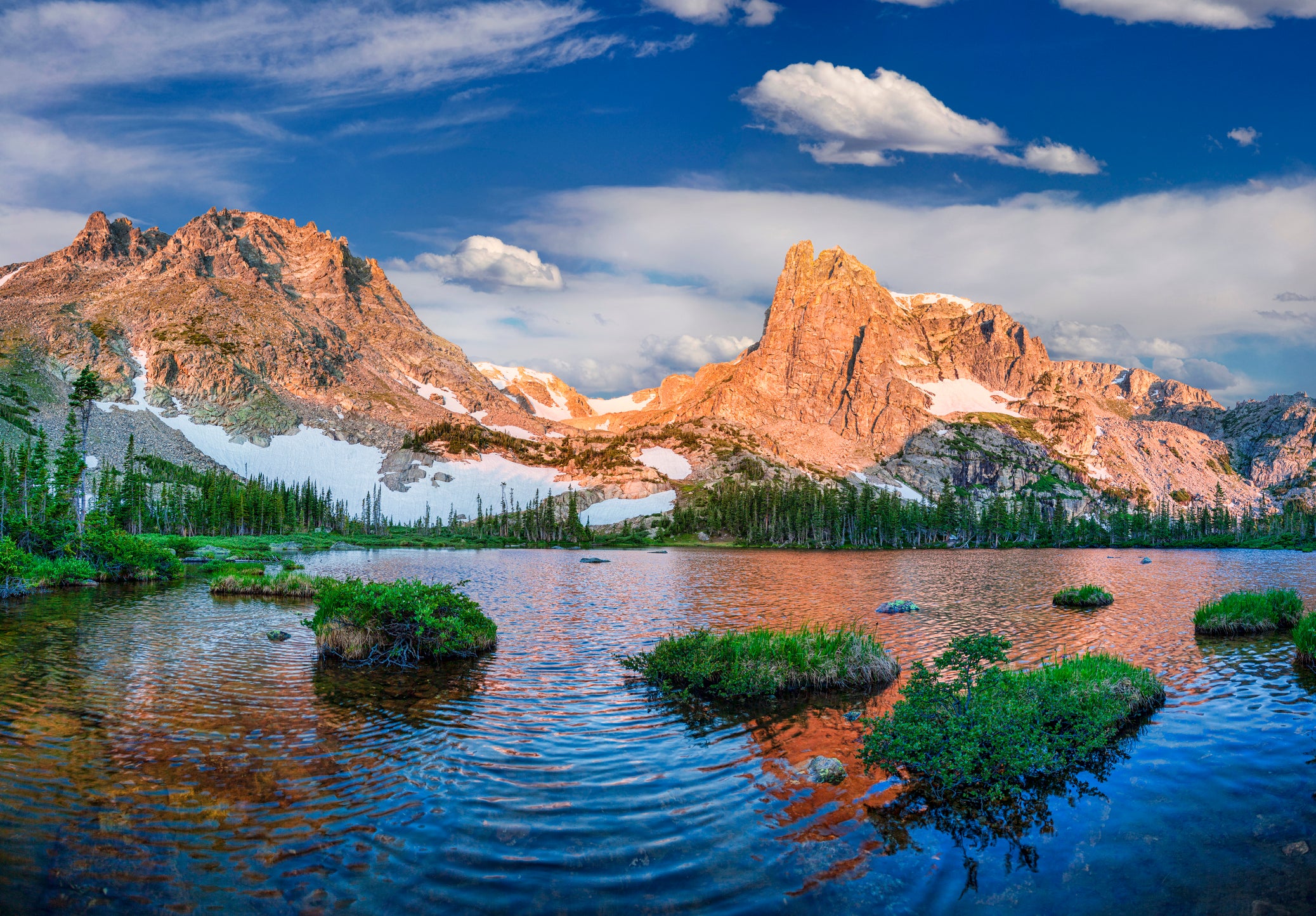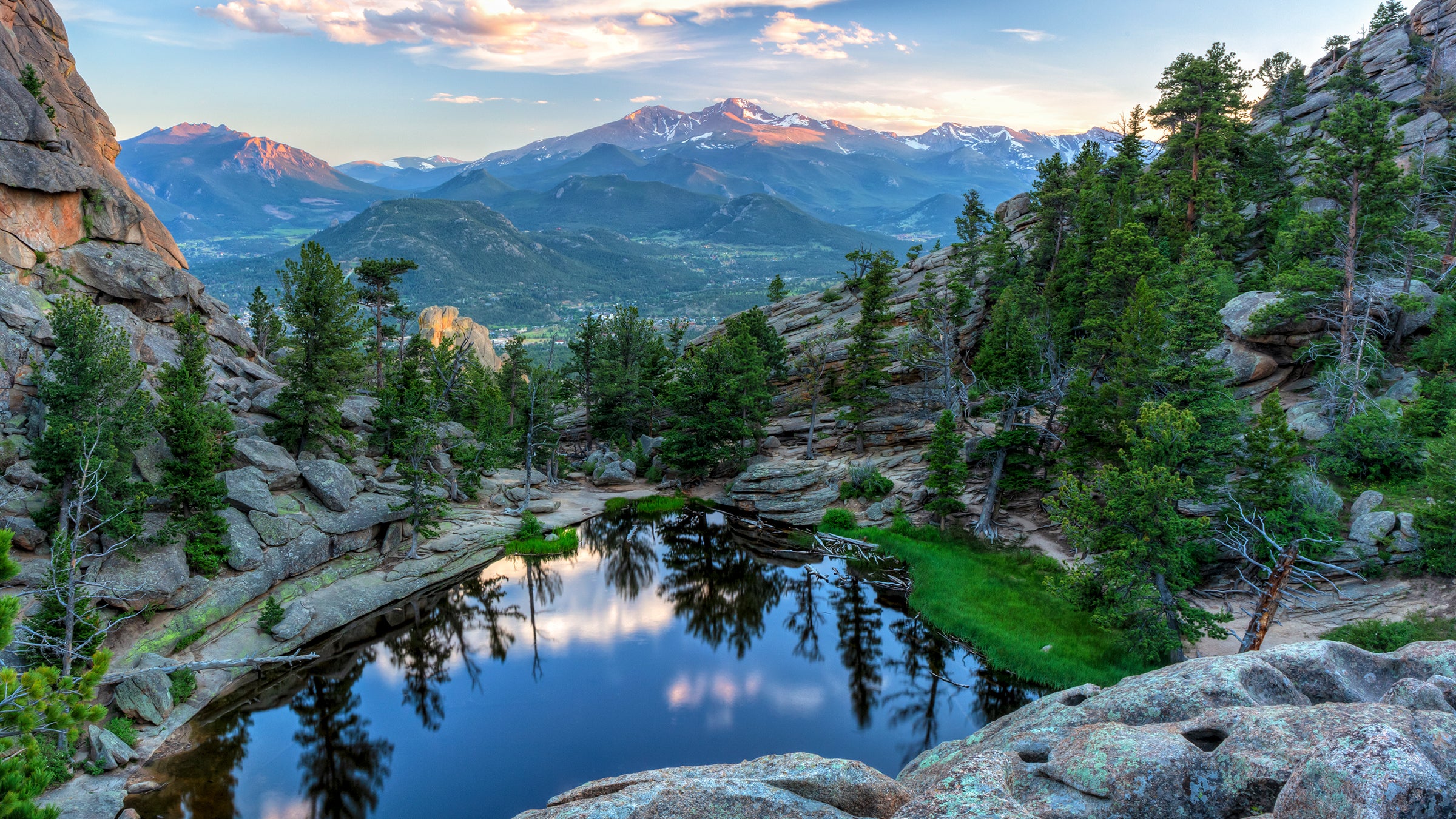
Rocky Mountain High: A Journalistic Exploration of America’s Crown Jewel
Jagged peaks tear at the azure sky, their snow-dusted summits piercing the clouds like ancient sentinels. Below, emerald valleys cradle glacial lakes, their surfaces mirroring the dramatic landscapes, while dense forests of pine and spruce cling stubbornly to steep slopes. This is Rocky Mountain National Park (RMNP), a sprawling 265,807-acre testament to the raw, untamed beauty of the American West, a place where the continental divide carves through granite, and the very air hums with the wild spirit of nature.
Designated a national park in 1915, RMNP is more than just a collection of breathtaking vistas; it is a vibrant, complex ecosystem, a living laboratory, and a sanctuary for millions of visitors seeking solace, adventure, and a profound connection to the natural world. From the montane forests at its base to the windswept alpine tundra that crowns its highest elevations, the park offers a journey through distinct ecological zones, each teeming with unique flora and fauna, and each telling a part of the grand story of the Rocky Mountains.
The Ribbon of the Sky: Trail Ridge Road

Perhaps the most iconic gateway to RMNP’s high-altitude wonders is Trail Ridge Road, often dubbed the "Highway to the Sky." This engineering marvel, the highest continuous paved road in North America, snakes its way for 48 miles, climbing to an astonishing 12,183 feet above sea level. For much of its length, it traverses the treeless expanse of the alpine tundra, offering unparalleled panoramic views that stretch for hundreds of miles across the Continental Divide.
Driving Trail Ridge Road is an experience that transcends mere sightseeing. It’s a sensory immersion. The air thins, growing crisper and cooler even on the warmest summer days. The landscape transforms from verdant forest to a sparse, rocky, yet intensely colorful environment. Here, gnarled, wind-sculpted krummholz trees, stunted by the harsh climate, mark the treeline, giving way to an open expanse where only the hardiest plants—delicate alpine forget-me-nots, brilliant moss campion, and hardy sedges—dare to grow.
"You feel like you’re on top of the world up here," remarked Sarah Jensen, a visitor from Texas, gazing out from a pull-off near Lava Cliffs. "It’s humbling. You see how small you are, and how immense this planet is. It puts everything into perspective." Indeed, the sheer scale of the landscape from this vantage point is awe-inspiring, a testament to geological forces that shaped these mountains over millions of years.
A Tapestry of Ecosystems: From Forest to Tundra
RMNP is a microcosm of the Rocky Mountain biome, showcasing three distinct life zones:
-
Montane (7,000-9,000 feet): This lowest zone is characterized by open ponderosa pine forests, interspersed with groves of quaking aspen that blaze gold in the autumn. Here, the landscape is dotted with meadows and streams, providing ideal habitat for elk, mule deer, and coyotes. This is often the first encounter visitors have with the park’s beauty, easily accessible from the park’s main entrances.

-
Subalpine (9,000-11,000 feet): As elevation increases, the forests become denser, dominated by lodgepole pine, Engelmann spruce, and subalpine fir. This zone is home to hundreds of high-mountain lakes, carved by ancient glaciers, and fed by snowmelt. It’s a prime habitat for moose, which favor the willow-lined streams and marshy areas, and a popular area for hikers aiming for iconic destinations like Emerald Lake and Sky Pond.
-
Alpine Tundra (above 11,000 feet): Above the treeline, the landscape transforms dramatically into the alpine tundra, an environment similar to that found in the Arctic. Here, fierce winds, thin air, intense solar radiation, and short growing seasons dictate life. Plants grow low to the ground, forming dense mats to protect themselves. This harsh environment is home to specialized wildlife like the elusive pika, the playful marmot, and the majestic bighorn sheep, whose powerful rams navigate the steep, rocky terrain with astonishing agility.
Wildlife Encounters: Nature’s Grand Spectacle
One of RMNP’s enduring draws is its abundant and diverse wildlife. The park is a haven for over 60 species of mammals and 280 species of birds, offering unparalleled opportunities for wildlife viewing, particularly during dawn and dusk.
The elk are arguably the park’s most famous residents. During the autumn rut, the haunting bugle of a bull elk echoing through the valleys is one of nature’s most unforgettable sounds. These magnificent animals, often seen grazing in open meadows, draw thousands of visitors annually. "It’s like a symphony of the wild," describes Park Ranger Mark Thompson, who has worked in RMNP for over two decades. "The bugling is a primal call, a reminder that we are in their home, and we’re just visitors."
Bighorn sheep, symbols of the Rockies, can often be spotted on the steep, rocky slopes around Sheep Lakes, especially in the summer. Their incredible climbing abilities and impressive curled horns are a sight to behold. Moose, once rare, have made a strong comeback in the park, preferring the wetland areas of the Kawuneeche Valley on the park’s west side. Visitors might also spot less common species such as black bears, mountain lions, and bobcats, though these shy predators are far more elusive.
A Living Laboratory and a Place of Challenge
Beyond its recreational appeal, RMNP serves as a crucial living laboratory for scientific research. Ecologists study the impacts of climate change on alpine ecosystems, the migration patterns of elk, and the delicate balance of predator-prey relationships. The park’s diverse elevations and relatively pristine condition offer invaluable insights into environmental health.
However, RMNP is not immune to the pressing environmental challenges facing the planet. Climate change manifests in shrinking glaciers, reduced snowpack, and earlier spring thaws, impacting water resources and alpine flora and fauna. In recent years, the park has also grappled with the devastating effects of wildfires, most notably the Cameron Peak and East Troublesome Fires in 2020, which collectively burned over 30,000 acres within park boundaries, altering landscapes and ecosystems for decades to come.
"These fires were a stark reminder of the fragility of these wild places and the accelerating impact of climate change," says Dr. Elena Rodriguez, a climate scientist studying the park’s high-altitude ecosystems. "The recovery process is ongoing, but it will take a very long time for some areas to return to anything resembling their pre-fire state. It underscores the urgency of conservation efforts."
Adding to these environmental pressures is the immense popularity of the park. With over 4.5 million visitors annually (pre-pandemic levels), RMNP is one of the busiest national parks in the United States. This surge in visitation has led to issues of overcrowding, traffic congestion, and strain on infrastructure. In response, the park has implemented a timed-entry reservation system to manage visitor flow, aiming to preserve both the visitor experience and the delicate ecosystems.
A Call to Stewardship
Rocky Mountain National Park is a testament to the enduring power and beauty of wilderness. It is a place that inspires awe, fosters adventure, and offers a much-needed respite from the demands of modern life. From the challenging ascent of Longs Peak, the park’s highest summit at 14,259 feet, to a peaceful stroll around Bear Lake, every experience in RMNP leaves an indelible mark.
Yet, this crown jewel of America’s national park system requires our active stewardship. The challenges of climate change, wildfires, and human impact demand vigilance and responsible action. As visitors, we are called not just to admire its grandeur but to protect its integrity for future generations.
"The mountains are calling, and I must go," wrote John Muir, a sentiment that resonates deeply with anyone who has stood beneath the towering peaks of RMNP. This park is more than just a destination; it’s an invitation—an invitation to reconnect with the wild heart of the continent, to breathe the thin, crisp air, and to remember our place within the grand, interconnected web of life. It’s a reminder that some places on Earth are so profoundly beautiful, so vital, that they demand our eternal respect and unwavering protection.


